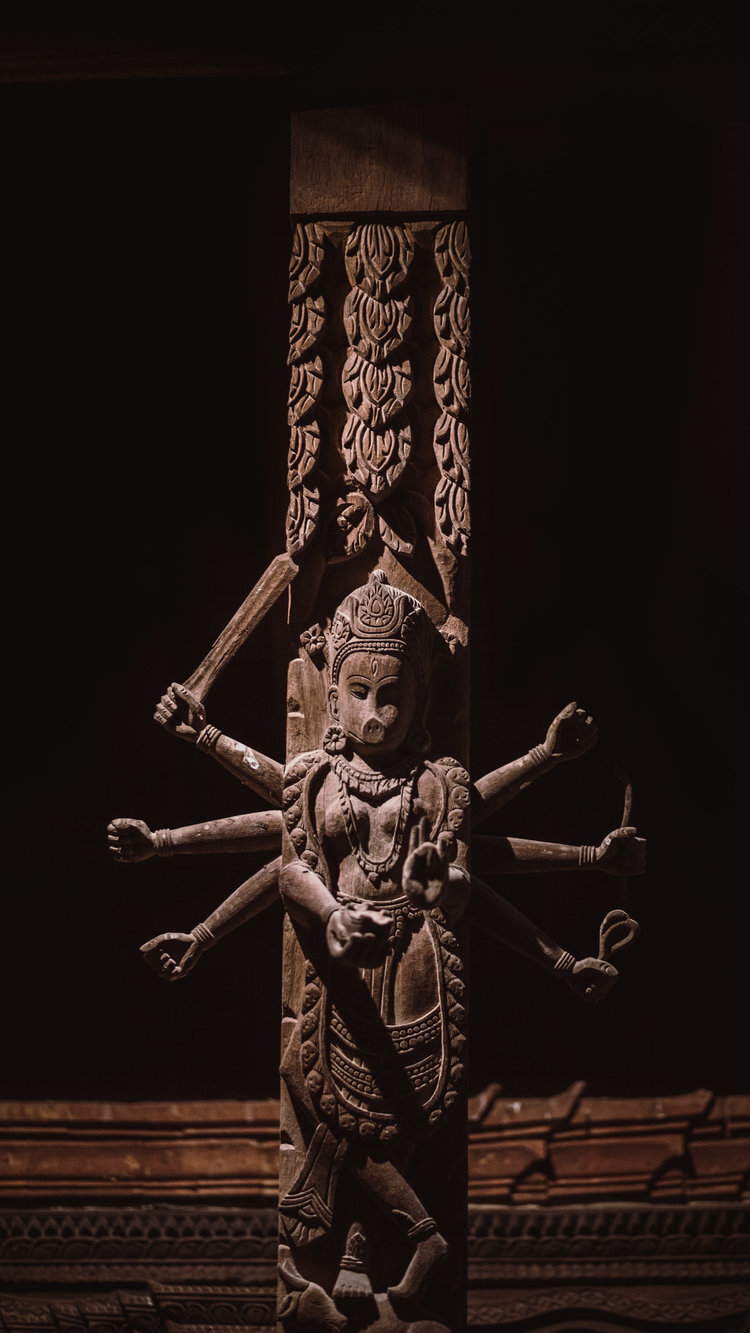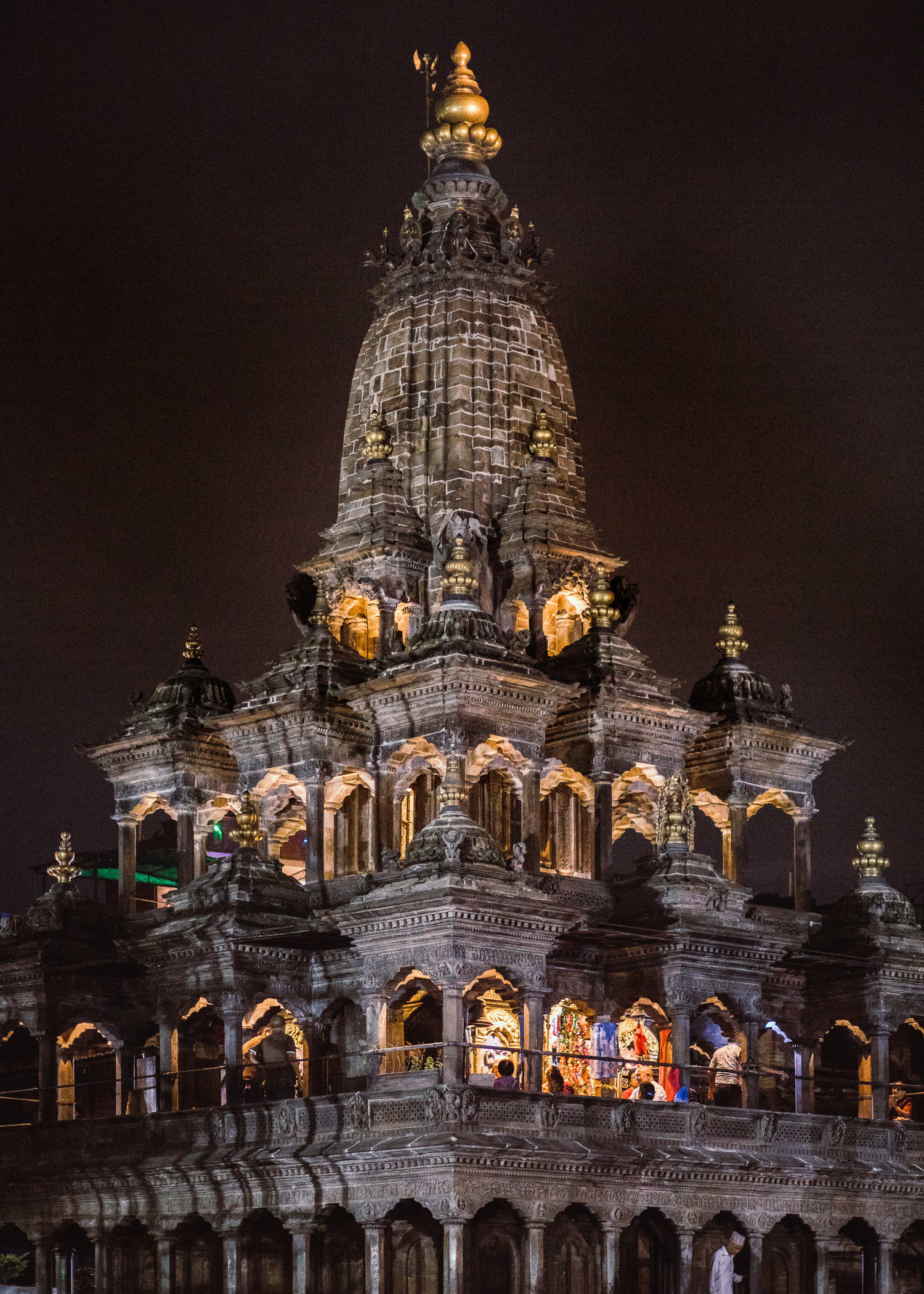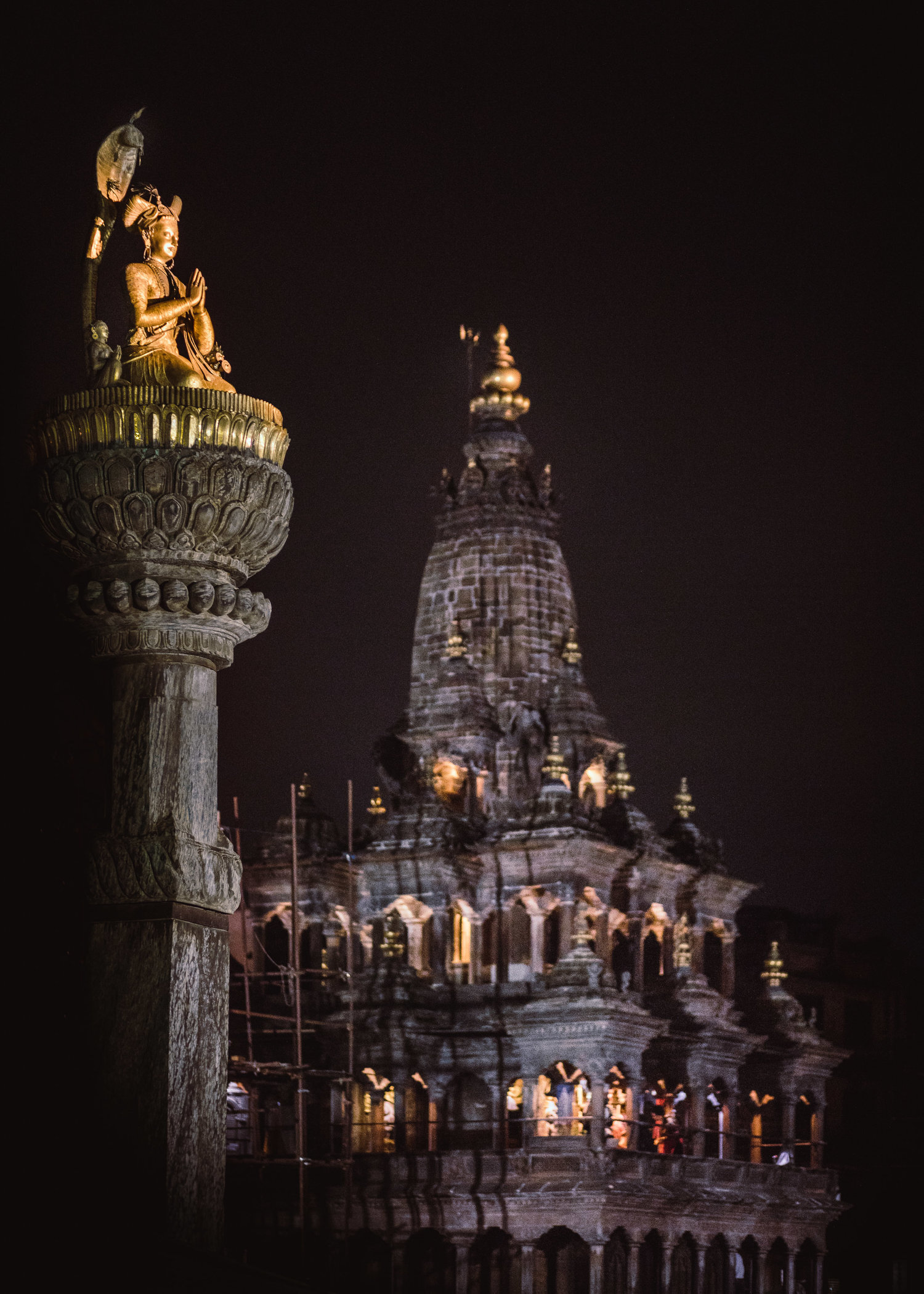Patan Durbar Square is situated at the centre of the city of Lalitpur in Nepal. It is one of the three Durbar Squares in the Kathmandu Valley, all of which are UNESCO World Heritage Sites. One of its attraction is the ancient royal palace where the Malla Kings of Lalitpur resided.
The Durbar Square is a marvel of Newar architecture. The Square floor is tiled with red bricks. There are many temples and idols in the area. The main temples are aligned opposite of the western face of the palace. The entrance of the temples faces east, towards the palace. There is also a bell situated in the alignment beside the main temples. The Square also holds old Newari residential houses. There are various other temples and structures in and around Patan Durbar Square built by the Newa People. The square was heavily damaged on 25 April 2015 baisakh 12 by a major earthquake.
The history of the Durbar Square is not clear. Although the Malla Kings of Lalitpur are given credit for establishing the royal square, it is known that the site is an ancient crossroad. The Pradhanas who settled around the site before the Mallas have connections with the Durbar Square.[1] Some chronicles hint that the history of Patan Thakuri Dynasty built a palace and made reforms to the locality but the evidence is minute. Scholars are certain that Patan was a prosperous city since ancient times.
The Malla Kings did make important changes to the square. Most of the current architecture is from the 1600s, constructed during the reign of King Siddhinarasimha Malla and his son Srinivasa sukriti. Some of the notable Mallas Kings who improved the square include Purandarasimha, Sivasimha Malla and Yoganarendra Malla.
Patan is one of the oldest known Buddhist cities. It is a center of both Hinduism and Buddhism with 136 bahals or courtyards and 55 major temples. Most of these structures are in the vicinity of the Durbar Square.
Krishna temple is the most important temple in Patan Durbar Square. It is built in the Shikhara style imported from India although it is unique in its own way. The stone carvings along the beam above the first and second-floor pillar are most notable. The first-floor pillar carvings narrate the events of the Mahabharata, while on the second floor there are visual carvings from Ramayana.
The temple was built in 1637 by King Siddhi Narasimha Malla. It is said that one night the King saw the Lord Krishna and his consort Srimati Radha standing in front of the royal palace. He ordered a temple to be built on the same spot. There are 21 golden pinnacles in the temple. Below the pinnacles are 3 stories. The first floor holds the main shrine of Lord Krishna with shrines of Radha and Rukmini at each side. The second floor is dedicated to Lord Shiva and the third to Lokeshwor (Lord Buddha). The square is crowded with thousands of Hindu Pilgrims and devotees during Krishnastami.





